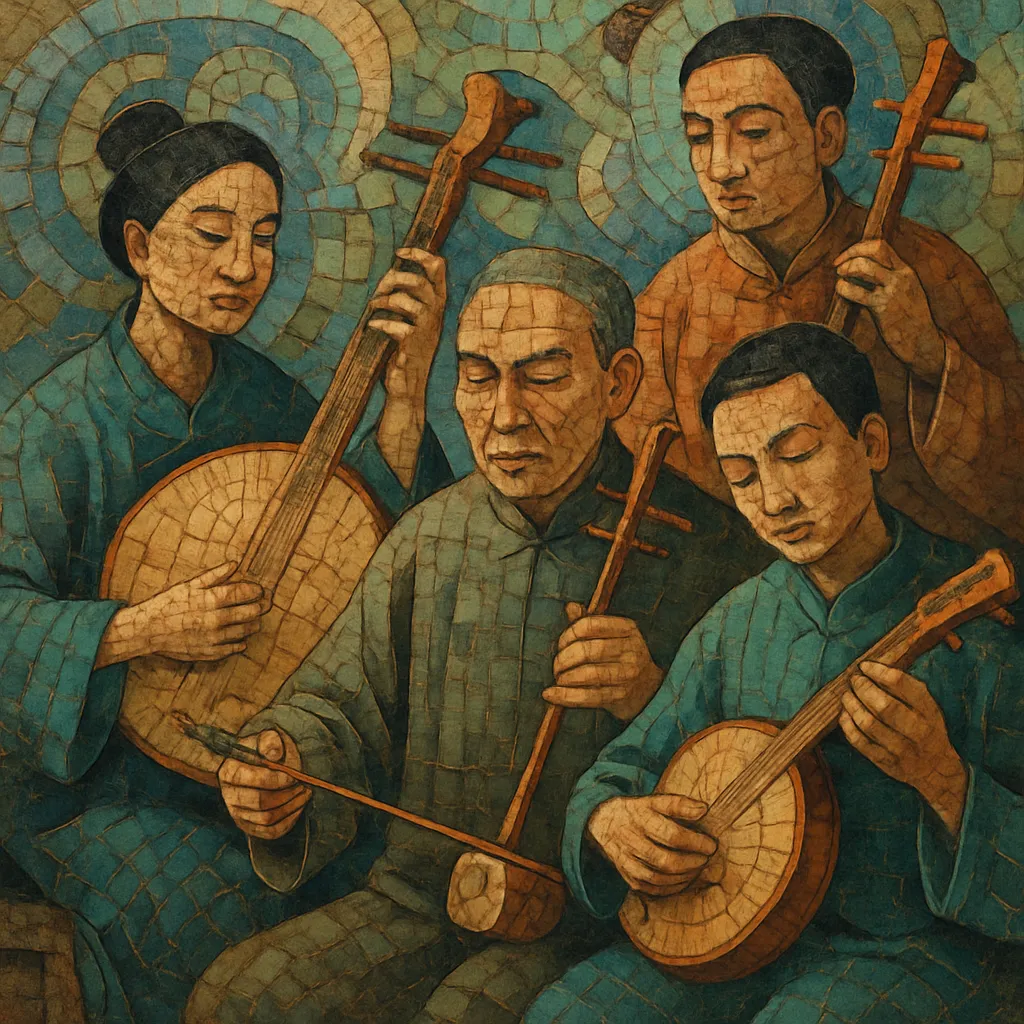Chaozhou xianshi (literally "string-poem" music) is a refined chamber ensemble tradition from the Chaoshan (Teochew) region of eastern Guangdong, China. It is performed primarily by strings and plucked lutes, with winds and light percussion, and is organized around fixed-tune (qupai) themes that are elaborated through heterophonic variation.
The style is noted for its subtle modal system, flexible intonation, and ornate ornamentation (slides, turns, and delicate vibrato). Performances often proceed from slow, spacious introductions to progressively quicker, dance-like sections, highlighting a collective, interweaving texture rather than solo virtuosity.
Xianshi is closely tied to literati salon culture and community music societies (bayin clubs). While instrumental and secular at its core, its aesthetics intersect with regional opera and ritual repertoires, and it remains a living tradition both in Guangdong and in Teochew diaspora communities across Southeast Asia.
Chaozhou xianshi coalesced during the Qing dynasty, when literati and amateur musicians in the Chaoshan area cultivated small ensemble music for salons and community gatherings. Drawing on older Chinese literati aesthetics (qingshang traditions), local folk repertories, and nearby southern styles, the xianshi ensemble took shape as a distinctive "string-poem" practice emphasizing variation on fixed tunes (qupai).
By the 19th century, xianshi was nurtured by bayin ("eight sounds") associations and temple-linked music clubs, which standardized repertoires, instrumentation, and modal practice. Pieces were arranged into suites that begin in a measured, unhurried tempo and accelerate through successive sections, showcasing collective heterophony and nuanced ornamentation.
Urbanization in Chaozhou/Shantou and increased mobility strengthened exchanges with other southern traditions (including Nanguan) and sizhu (silk-and-bamboo) practices. Hand-copied part books and oral transmission remained the main vehicles for preserving repertory, while local ensembles performed for civic ceremonies, festivals, and private salons.
From the mid-20th century onward, Teochew diaspora communities in Hong Kong, Singapore, Malaysia, Thailand, and beyond formed cultural associations that kept xianshi active abroad. In contemporary China, xianshi is taught in conservatories and cultural centers within the broader framework of Chaozhou music, with ongoing documentation and staged concerts helping to sustain the tradition.


